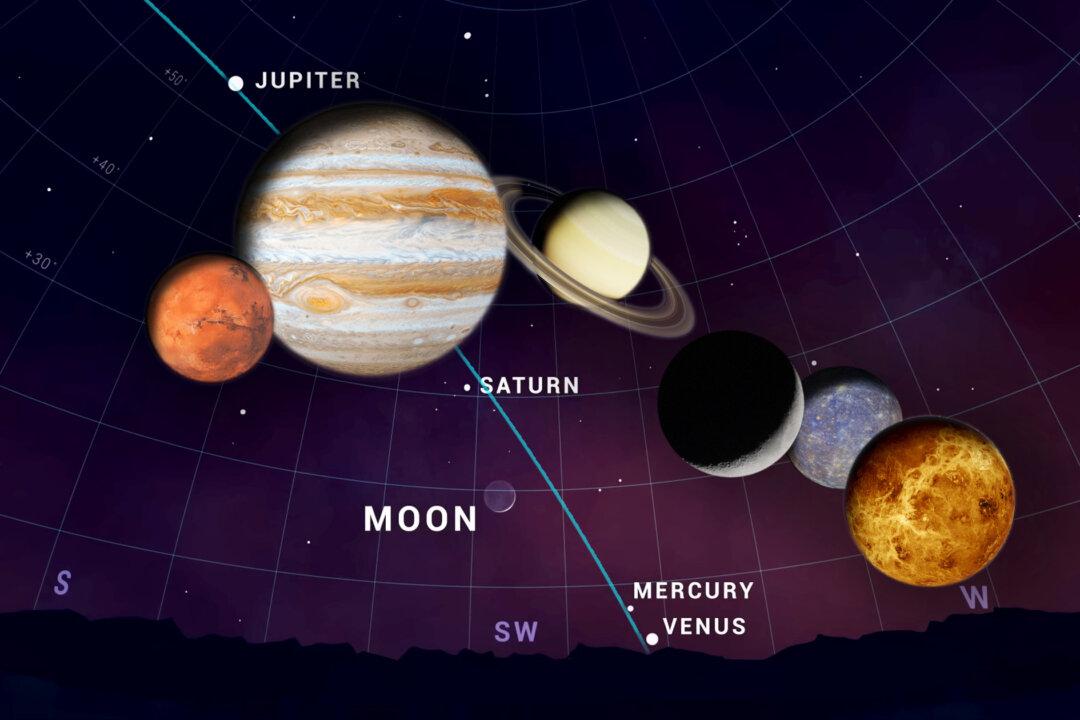You could call it a cosmic encore. It so happens last June’s planetary alignment—which included eight planets in our solar system lining up—is seeing a repeat performance this December, leading into the new year. So, if circumstances prevented you from taking in the last “planet parade,” you'll have a few days to catch this one on the home stretch.
This month, eight planets—including Earth again—have fanned out across the starry expanse and currently appear as a grand, arced procession. Starting about 45 minutes after sundown local time, from low on the horizon, the planets arc southwest to east: Venus, Mercury, Saturn, Neptune, Jupiter, Uranus, and Mars in that order. Weather permitting, all save Neptune and Uranus will be visible to the naked eye.






